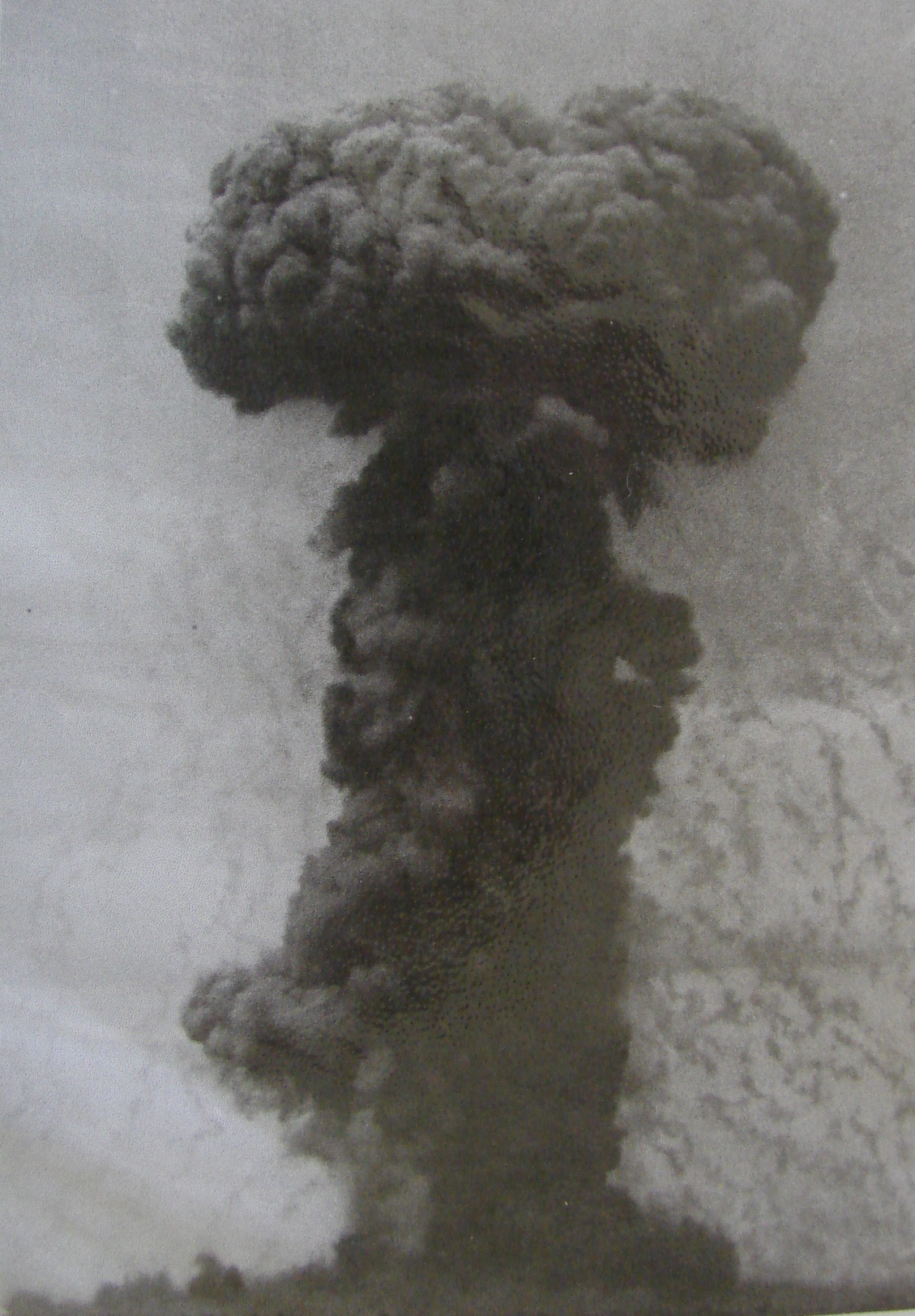Between 1952 and 1963, British forces dropped nine nuclear weapons and nine thermonuclear weapons between Woomera and the Western Australian border, within contamination distance of urban centers. The Menzies-led Australian government of that time was wholly complicit and lied about the known dangers of nuclear tests. Between these bombings, Britain conducted continuous “minor trials,” which, according to the Royal Commission into British Nuclear Tests in Australia, additionally detonated 99.35 kg of beryllium, 23.979 kg of plutonium, and 7968.88 kg of depleted uranium. By contrast, Little Boy, dropped on Hiroshima in 1945 by the United States, contained only 64 kg of uranium-235, and Fat Man, dropped on Nagasaki in 1945 by the United States, contained only 6.4 kg of plutonium. Anyone who wishes to immediately lose faith in the human race should read the short transcript of the Royal Commission, which is freely available online.
A rough timeline is provided:
1955–57: “Kittens,” Maralinga Naya, chemical detonation, 0.75 kg beryllium
1955–57: “Kittens,” Maralinga Kittens, chemical detonation, 120 kg depleted uranium
May 16, 1956: Operation Mosaic, “G1,” Monte Bello Islands, 15 kiloton nuclear weapon
May 19, 1956: Operation Mosaic, “G2,” Monte Bello Islands, 60 kiloton nuclear weapon
September 27, 1956: Buffalo, “One Tree,” Maralinga, 12.9 kiloton nuclear weapon
October 4, 1956: Operation Buffalo, “Marcoo,” Maralinga, 1.4 kiloton nuclear weapon
October 11, 1956: Operation Buffalo, “Kite,” Maralinga, 2.9 kiloton nuclear weapon
October 22, 1956: Operation Buffalo, “Breakaway,” Maralinga, 10.8 kiloton nuclear weapon
1956–58: “Rats,” Maralinga Naya 1, chemical detonation, 151 kg depleted uranium
1956–60: “Tims,” Maralinga Kuli TM4, chemical detonation, 6605 kg depleted uranium
September 14, 1957: Operation Antler, “Tadje,” Maralinga, 0.9 kiloton thermonuclear weapon
September 25, 1957: Operation Antler, “Biak,” Maralinga, 5.7 kiloton thermonuclear weapon
October 9, 1957: Operation Antler, “Taranaki,” Maralinga, 26.6 kiloton thermonuclear weapon
November 8, 1957: Operation Grapple X, “Round C,” Christmas Island, 1.8 megaton thermonuclear weapon
April 28, 1958: Operation Grapple Y, Christmas Island, 3 megaton thermonuclear weapon
1959: “Vixen A,” Maralinga Wewak VK29, chemical detonation, 0.14 kg beryllium
1959: “Vixen A,” Maralinga Wewak VK28, chemical detonation, 0.25 kg beryllium
1959: “Vixen A,” Maralinga Wewak VK27, chemical detonation, 0.23 kg beryllium
1959: “Vixen A,” Maralinga Wewak VK30, chemical detonation, 0.10 kg beryllium
1959: “Rats,” Maralinga Dobo, chemical detonation, 28 kg depleted uranium
1959–60: “Tims,” Maralinga Kuli TM11, chemical detonation, 26.2 kg beryllium
1959–60: “Tims,” Maralinga Kuli TM11, chemical detonation, 67 kg depleted uranium
1960: “Tims,” Maralinga Naya 1 TM100, chemical detonation, 0.6 kg plutonium
1960: “Vixen A,” Maralinga Wewak, chemical detonation, 67.8 kg depleted uranium
1960–61: “Tims,” Maralinga Kuli TM16, chemical detonation, 39 kg beryllium
1960–62: “Kittens,” Maralinga Naya 2, chemical detonation, 32 kg depleted uranium
1960–63: “Vixen B,” Maralinga Taranaki, chemical detonation, 22.2 kg plutonium
1960–63: “Tims,” Maralinga Kuli TM16, chemical detonation, 731 kg depleted uranium
1961: “Tims,” Maralinga Naya TM101, chemical detonation, 0.6 kg plutonium
1961: “Vixen A,” Maralinga Wewak VK60A, chemical detonation, 0.294 kg plutonium
1961: “Vixen A,” Maralinga Wewak VK60C, chemical detonation, 0.277 kg plutonium
1961: “Tims,” Maralinga Kuli TM5, chemical detonation, 10 kg beryllium
1961: “Vixen A,” Maralinga Wewak 60A, chemical detonation, 1.72 kg beryllium
1961: “Vixen A,” Maralinga Wewak 60B, chemical detonation, 1.72 kg beryllium
1961: “Vixen B,” Maralinga (Taranaki site), chemical detonation, 17.6 kg beryllium
1961: “Tims,” Maralinga Kuli TM50, chemical detonation, 90 kg depleted uranium
1963: “Vixen B,” Maralinga Taranaki, chemical detonation, 24.9 kg depleted uranium
1963: “Vixen B,” Maralinga Taranaki, chemical detonation, 22.4 kg depleted uranium
Five Threnodies for Maralinga
|
I Es atmet mich, it breathes me, by atomic blasts.
It is breathing slowly
like a heart, or an animal dying and in the periodicity of its own blood is become sternklang,
the language of stars. |
Sun glints from its surface
like something solid.
|
|
In the 1950s, Robert Menzies
surrendered this desert to men who look down from flag-draped podiums
and parliamentary stairs. They built bombing ranges that from outer space resemble occult sigils. Es atmet uns, it is not in the nature of demons to refuse such invitations.
|
And its interior is the muscle
of a snake, coiling recoiling— it dislocates its jaw
and spews blackened birds into the desert,
Wedgetailed eagles
with their eyes burned out. Soldiers club them from air
with axe handles—
some of them are crying. |
|
Low on the horizon
a greasy cloud makes whispering noise as it advances
erasing the mulgas.
|
Do you remember?
These rivers, these mallee and paper daisies We took it all away.
|

